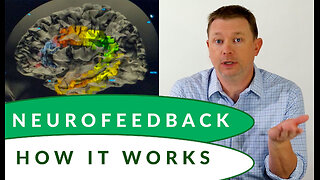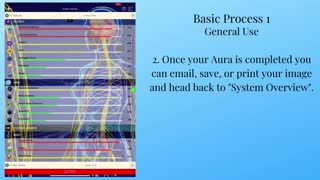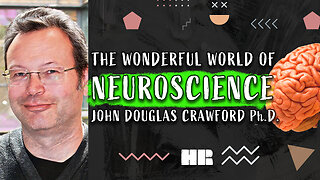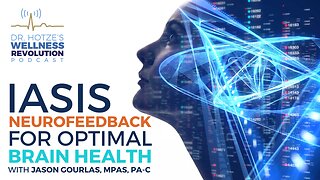What Is Biofeedback_ Center for Brain Training's, Mike Cohen, Discusses Types of Biofeedback
http://www.CenterforBrainTraining.com
Mike Cohen, from the Center for Brain Training in Florida, describes what biofeedback is and the ways it can help people gain better control and a healthier central nervous system. A tremendous amount of research supports the benefits of biofeedback therapy for a variety of situation like migraines, headaches, anxiety, sports performance, and more.
A transcript of this video is provided below.
Video created and transcript provided by http://www.BusinessPromoVideo.com
.
Audio supplied by Mike Cohen of the Center for Brain Training
Hi. My name is Mike Cohen with the Center for Brain Training in Jupiter, Florida.
So what is biofeedback?
To understand biofeedback, you have to understand the basic principle that anything that can be measured can be changed. So if we think of measuring physiological parameters from the body, that might mean your heart rate. If I had a monitor and I was displaying what your heart rate was, and it was 70 beats per minute, could you, by simply watching that monitor, get yourself to change your heart rate to 68 or up to 72? Could you slow down or speed it up? Definitely so.
If you put a sensor on your fingertip, and it measured your temperature of your finger at 92.0 degrees, could you learn to increase the temperature to 93.0 degrees? Even a 4-year-old child can learn to do that. It is very simple to do.
You can change anything that can be measured. The most common types of biofeedback are breathing, being able to slow your breathing down, something called heart rate variability that measures a heart rate measure that combines both heart beat and breathing, there is muscle biofeedback which is called EMG. You are measuring the electrical activity of muscle firing around the neck and the head. This is often used for tension headaches and for migraines, and people can learn when they see the muscle activity and excessive muscle activity firing around their neck muscles and muscles around their head, they are able to reduce that activity.
So that is a type of biofeedback. Another type of biofeedback is brain biofeedback. If I can measure your EEG your brain waves can you change it? The answer is "yes".
So with all of these different types of biofeedback, and you could do it with blood pressure. If you had a real time monitor of your blood pressure, could you change it? Yes, and you might not be able to change it very much because you are not good at this task yet, but with all of these tasks, anything you can measure, you can change. That is biofeedback.
The process then is of giving that information and helping the individual learn to change those measures. And when you are measuring brainwave activity, there is a whole field of a particular kind of biofeedback called neurofeedback, and that neurofeedback is simply measuring brain activity and having that change. So any of these things that occur are biofeedback. Fundamentally, that is what it is.
People always go, "Well, how do I learn to change that."
There's a variety of mechanisms that come into play, but everybody can learn to change these things. It may take time and practice to learn to get really good at it, but as you gain control over that, you have greater control over your physiology and over your core, what we would call, central nervous system functioning. So all of these things, in terms of biofeedback, help impact your performance, the performance of your body, and your central nervous system's response to stress. Biofeedback is a very powerful tool for anyone who is willing to practice to learn to gain control and better regulation of those particular parameters.
----------------
Copyright Disclaimer under section 107 of the Copyright Act of 1976, allowance is made for “fair use” for purposes such as criticism, comment, news reporting, teaching, scholarship, education and research. Fair use is a use permitted by copyright statute that might otherwise be infringing.
-
 18:55
18:55
Alchemical Science
1 year agoDesigning biofeedback algorithms with Brainbay (EEG, ECG, EMG)
45 -
 4:28
4:28
TerryH57
1 year agoQuick Overview of Genius Biofeedback
33 -
 13:55
13:55
The Human Condition
7 months agoHow Does Neurofeedback Therapy Work
2 -
 4:52
4:52
Devin Lockett
1 year agoNeurofeedback testimonial
18 -
 2:02
2:02
Genius Biofeedback Experience and Education
1 year agoGenius Biofeedback - Basic Process 1 (General Use)
901 -
 1:00:28
1:00:28
GeniusBiofeedback
1 year ago $0.01 earnedBring the Pieces Together: Genius Biofeedback Weekly Training (General Overview and more)
19 -
 15:32
15:32
TerryH57
1 year agoWhat is Genius Insight and Biofeedback?
45 -
 19:26
19:26
TerryH57
1 year agoFrequency-Biofeedback For Health
50 -
 39:37
39:37
The Homeless Romantic
9 months agoJohn Douglas Crawford Ph.D. | The Wonderful World of Neuroscience | #164 HR
43 -
 23:11
23:11
Hotze Health & Wellness Center
1 year agoIASIS Neurofeedback for Optimal Brain Health
54